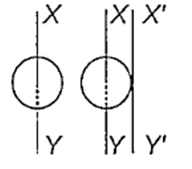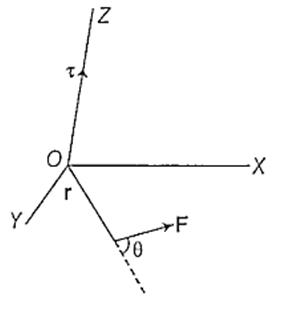 Multiple Choice Questions
Multiple Choice QuestionsA solid sphere and a hollow sphere, both of the same size and same mass roll down an inclined plane. Then
solid sphere reaches the ground first
hollow sphere reaches the ground first
both spheres reach the ground at the same time
the time at which the spheres reach the ground cannot be specified by the given data
In the HCl molecule, the separation between the nuclei of the two atoms is about 1.27 . The approximate location of the centre of mass of the molecule, assuming the chlorine atom to be about 35.5 times as massive as hydrogen is
A sphere of mass 10 kg and radius 0.5 m rotates about a tangent. The moment of inertia of the sphere is
5 kg-m2
2.7 kg-m2
3.5 kg-m2
4.5 kg-m2
A solid sphere (mass 2 m) and a thin spherical shell (mass M) both of the same size, roll down an inclined plane, then
solid sphere will reach the bottom first
hollow spherical shell will reach the bottom first
both will reach at the same time
cannot be predicted as the data is insufficient
If the earth were to suddenly contract to half the present radius (without any external torque acting on it), by how much would the day be decreased ? (Assume earth to be a perfect solid sphere of moment of inertia )
8 h
6 h
4 h
2 h
The moment of inertia of a circular disc of radius 2 m and mass 1 kg about an axis passing through the centre of mass but perpendicular to the plane of the disc is 2 kg m2. Its moment of inertia about an axis parallel to this axis but passing through the edge of the disc is (see the given figure).

8 kg m2
4 kg m2
10 kg m2
6 kg m2
A force acts on a particle whose position vector is . What is the torque about the origin ?
A.
Given,

We know that ζ = r × F
So, torque about the origin will be given by
A rotating wheel changes angular speed from 1800 rpm to 3000 rpm to 20 s. What is the angular acceleration assuming to be uniform ?
A body having a moment of inertia about its axis of rotation equal to 3 kg m2 is rotating with angular velocity of 3 rad s-1. Kinetic energy of this rotating body is same as that of a body of mass 27 kg moving with a velocity v. The value of v is
1 ms-1
0.5 ms-1
2 ms-1
1.5 ms-1
